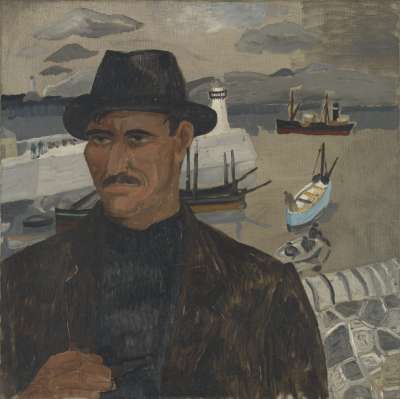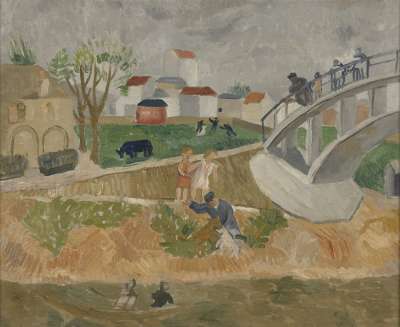(1901 - 1930)
Within a short life, Christopher Wood achieved a prodigious degree of painting, drawing and theatrical design. Born in Knowsley, near Liverpool, he studied briefly in Paris in 1921, after which he travelled in Europe and North Africa up to the mid 1920s, returning often to Paris. In this period, he was a popular figure in artistic circles, mixing with artists including Picasso and Cocteau. He was a close friend of British artist Winifred Nicholson and her husband, Ben Nicholson. Wood often stayed with them on painting trips to St Ives in Cornwall. Wood’s first solo exhibition was held at Arthur Tooth & Sons Gallery, London, in April 1929. That summer and autumn, he visited Brittany for the first time, a region reminiscent of Cornwall in its environment and community. Suffering from the effects of opium withdrawal, in a delirious state and apparently believing that assassins were pursuing him, Wood left Paris in August 1930 for England, to seek advice from his mother and sister. However shortly after meeting them, he threw himself under a train at Salisbury railway station. After his death, recognition of Wood increased, particularly as a British artist who had assimilated European influences into his work. By the 1940s, the style and subjects of his work, combined with the brevity of his life, appealed to a new generation of artists, including John Minton, John Craxton and Michael Ayrton.

